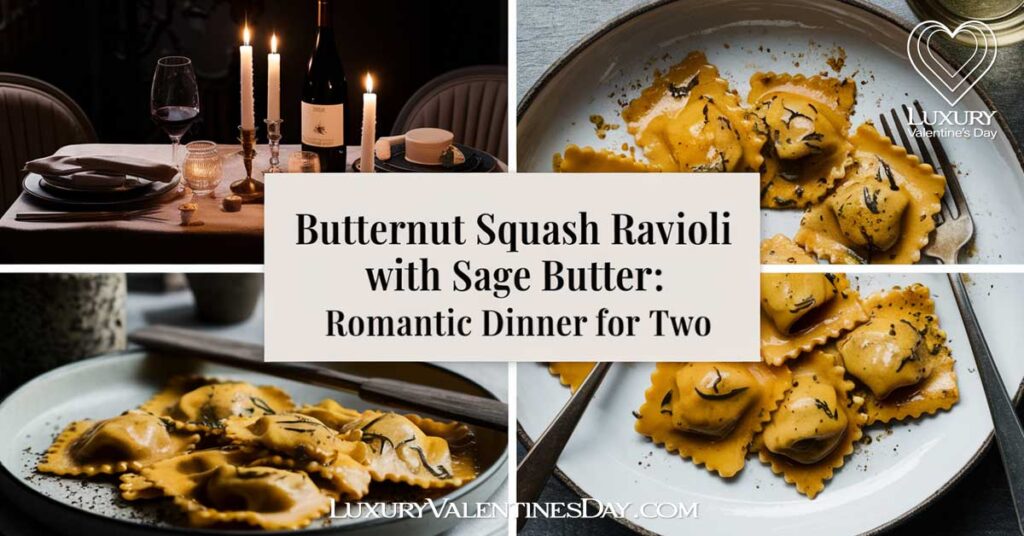
Table of Contents
ToggleCreative Embossing Ideas to Elevate Your Cookie Designs
For a cookie design that stands out in texture and detail, embossed decorated cookies are the perfect choice, adding dimension and elegance to any treat.
Embossing transforms simple cookies into artistic creations with stunning textures, making them look as though they’re wrapped in delicate patterns. This technique is ideal for any special occasion, adding a sophisticated and professional look to your cookies.
Imagine serving cookies with elegant embossed patterns, each one a beautiful blend of design and flavor. With embossed decorated cookies, you can elevate your baking with intricate textures that make a lasting impression.
Embossing may look complex, but it’s surprisingly achievable with the right tools and techniques. From using textured mats to embossing rolling pins, this guide provides everything you need to create embossed decorated cookies with unique, eye-catching designs.
If you’re looking for more creative inspiration, explore our circle sugar cookie decorating ideas for elegant and easy options.
What is Embossing?
Embossing is a technique used in baking, crafts, and design to create raised patterns, textures, or images on a surface. In the context of cookies, embossing involves pressing a pattern into the dough or icing, creating a three-dimensional effect that gives the cookie a unique, textured appearance.
How Embossing Works for Cookies
For cookies, embossing can be achieved in several ways:
- Embossing Rolling Pins: These rolling pins have patterns etched into them. When rolled over cookie dough, they press the design into the surface, creating a raised or indented pattern.
- Textured Mats and Silicone Molds: These are flexible tools with intricate patterns that can be pressed onto cookie dough or fondant, transferring their texture to the cookie.
- Stamps and Tools: Individual silicone or wooden stamps can be used to press specific shapes, initials, or designs onto cookies, allowing for custom patterns.
Why Use Embossing for Cookies?
Embossing adds a sophisticated, decorative touch to cookies without the need for intricate piping or additional decorations. It’s perfect for achieving professional-looking cookies with minimal effort, making it ideal for events like weddings, holidays, and celebrations.
How to Create Embossed Patterns on Cookies
Embossing can be done in several ways, depending on the type of look you want to achieve. Here are the most common methods for creating embossed patterns on your cookies:
1. Using Embossing Tools
Embossing Stamps: These are small stamps specifically designed for food, featuring intricate patterns or designs that can be pressed directly into cookie dough or fondant. They come in a wide range of styles, from floral motifs to holiday themes.
How to Use: After rolling out the dough, gently press the embossing stamp into the surface. Make sure to press evenly to create a consistent impression. If you’re working with fondant, use the stamp after rolling it out and before placing it on the cookie.
Tip: Lightly dust the stamp with flour or icing sugar to prevent sticking, especially when working with softer doughs or fondant.
2. Patterned Rolling Pins
Patterned rolling pins are a quick and easy way to create a uniform embossed texture across the entire surface of the dough. These rolling pins have raised patterns, such as lace, swirls, or geometric shapes, that leave an imprint when rolled over the dough.
How to Use: Roll out the dough to your desired thickness with a regular rolling pin first. Then, gently roll the patterned rolling pin over the dough, applying even pressure to transfer the design. Cut out the cookies with a cutter to preserve the embossed pattern.
Tip: Chill the dough slightly before embossing to help the pattern hold its shape during baking. For a deeper impression, you can roll over the pattern twice, but be careful not to distort the design.
3. Textured Mats or Silicone Moulds
Textured mats and silicone moulds are flexible sheets with raised patterns that can be pressed into dough, fondant, or icing to create detailed textures. They offer a wide variety of designs, from elegant lace to intricate damask.
How to Use: Place the mat or mould over the dough or fondant and press down firmly with a rolling pin or your hands. Remove the mat carefully to reveal the embossed pattern. If working with fondant, you can also use the mat to emboss directly on a sheet of fondant before cutting and applying it to the cookie.
Tip: Use a soft brush to lightly dust the mat or mould with cornflour or icing sugar to prevent sticking. For an even texture, press down with consistent pressure across the entire surface.
4. Embossing Fondant or Icing
You can also emboss fondant or royal icing after applying it to the cookie. This is a great way to add texture without affecting the dough underneath.
How to Use: Roll out the fondant, apply it to the cookie, and then press an embossing tool or patterned mat over the fondant. Alternatively, you can apply the icing and emboss it while it’s still slightly soft. Use silicone moulds to create detailed fondant appliques that can be attached to the cookie.
Tip: If embossing royal icing, wait until it’s just set enough to hold an impression but not fully hardened. Use a gentle hand to avoid cracking or tearing the icing.
Tools and Techniques for Embossed Decorated Cookies
Creating embossed decorated cookies can add beautiful texture and depth to your designs. This table highlights the essential tools and techniques to help you achieve stunning embossed patterns. With these ideas, you’ll be able to create intricate, professional-looking cookies that stand out at any event.
| Tool/Technique | Best For | Tips for Use | Suggested Designs |
|---|---|---|---|
| Embossing Rolling Pins | Full cookie coverage with patterns | Roll evenly over dough for consistent texture | Floral motifs, geometric patterns |
| Textured Mats | Creating intricate backgrounds | Press gently into cookie dough before baking | Lace, swirls, damask |
| Silicone Stamps | Detailed individual designs | Press lightly onto dough; ideal for smaller, defined patterns | Hearts, initials, floral accents |
| Fondant Embossing Tools | Adding texture to fondant-covered cookies | Apply pressure on fondant before placing on cookie | Leaves, lattice, abstract designs |
| Edible Metallic Dusts | Highlighting embossed areas | Brush over embossed patterns for contrast and added elegance | Golden accents, silver highlights |
Design Ideas for Embossed Cookies
Embossed patterns allow for endless creativity, and you can tailor the designs to suit any theme or occasion. Here are some ideas to inspire your embossed cookie creations:
1. Delicate Floral Patterns
What It Is: Floral embossing is a classic choice that adds a soft, romantic touch to your cookies. Think delicate roses, daisies, or vines that create a timeless and elegant appearance.
How to Use: Choose an embossing stamp or rolling pin with a floral design. Press it into the dough or fondant for a garden-inspired look. You can leave the pattern as-is or paint it lightly with edible colours for added detail.
Perfect for: Weddings, bridal showers, garden parties, or springtime celebrations. Floral embossing looks beautiful in soft pastels or on white backgrounds for a vintage feel.
2. Lace Designs for a Vintage Touch
What It Is: Lace embossing mimics the intricate patterns of lace fabric, giving your cookies a delicate, vintage-inspired look. This design is perfect for events that require a touch of old-world elegance.
How to Use: Use a lace-patterned mat or rolling pin to create a lace effect on fondant or dough. If you want the lace to stand out, brush the raised areas with edible pearl dust or metallic paint for a subtle shimmer.
Perfect for: Vintage-themed events, formal occasions, afternoon teas, or romantic settings. White or cream-coloured lace looks especially classy and traditional.
3. Geometric Shapes for a Modern Look
What It Is: Geometric embossing involves patterns like chevrons, hexagons, or abstract lines, giving your cookies a sleek and contemporary feel. The clean lines and symmetry create a striking visual effect.
How to Use: Use a geometric-patterned rolling pin or embossing tool to imprint the pattern onto the dough. For a modern twist, consider adding a touch of metallic paint to highlight certain areas of the pattern.
Perfect for: Modern weddings, corporate events, and trendy parties. Geometric designs work well with bold colours or monochromatic schemes for a minimalist look.
4. Seasonal and Holiday Themes
What It Is: Embossed cookies can be tailored to fit any holiday or season by using themed patterns. Think snowflakes for winter, leaves for autumn, or seashells for summer.
How to Use: Choose embossing tools that match the theme—like snowflake stamps for Christmas or leaf-patterned rolling pins for autumn. Emboss fondant with holiday-themed designs and add a light dusting of edible glitter for a festive touch.
Perfect for: Seasonal parties, holiday gatherings, or themed events. These designs are particularly fun for creating cookie gift sets or holiday displays.
5. Monograms and Personalized Designs
What It Is: Personalising your cookies with embossed monograms or initials adds a special touch that’s perfect for weddings, birthdays, or milestone events. This creates a custom, bespoke look that feels personal and thoughtful.
How to Use: Use a small embossing stamp with the initials or monogram of your choice. For a truly personalised touch, consider adding the date or a short message embossed into the dough.
Perfect for: Weddings, birthdays, anniversaries, or any special occasion that calls for personalised treats. Monograms look elegant when highlighted with edible gold or silver accents.
6. Art Deco and Vintage Glamour
What It Is: Art Deco patterns are all about bold lines, symmetry, and stylised shapes, capturing the glamour of the 1920s. These designs make a bold, luxurious statement with a touch of vintage flair.
How to Use: Use embossing tools with bold, linear patterns like zigzags, fans, or scallops. Highlight the raised patterns with metallic edible paint to enhance the luxurious look.
Perfect for: Great Gatsby-themed parties, New Year’s Eve events, or formal celebrations. Black and gold or navy and silver combinations are particularly effective for this style.
Tips for Perfect Embossed Cookies

1. Chill Dough for Sharp Impressions
If your dough is too soft, the embossing may not hold its shape well during baking. Chill the dough for 15-20 minutes before embossing to ensure a clean, sharp impression. This step is especially important for butter-rich doughs that tend to spread.
Tip: If embossing fondant, you can also chill the fondant briefly to firm it up, making it easier to emboss without distorting the pattern.
2. Go Slow for Better Detail
Take your time when pressing the embossing tool, rolling pin, or mat into the dough. Apply steady, even pressure to ensure a clear pattern. Rushing can lead to uneven or distorted designs.
Tip: Practise the embossing technique on a spare piece of dough or fondant before moving to the final batch to get a feel for the pressure needed.
3. Highlight Patterns with Edible Dust or Paint
After embossing, you can enhance the patterns with a touch of edible pearl dust, gold or silver edible paint, or even a light layer of royal icing. This adds dimension and makes the design pop.
Tip: Use a fine brush to apply edible accents only to the raised areas for a refined look, or dust the entire surface lightly for a more subtle effect.
4. Keep Patterns Simple for Smaller Cookies
If you’re decorating smaller cookies, opt for simpler patterns with fewer details. Overly intricate designs may become muddled or lose clarity when scaled down to a small surface.
Tip: For larger cookies, feel free to use more complex designs with multiple elements, as there’s more room to showcase the pattern.
5. Seal the Design
If you’re worried about the embossed pattern fading during baking, you can lightly brush the cookie surface with an egg wash or sugar syrup before baking. This helps preserve the details and gives a slight shine to the finished cookie.
Tip: For fondant-embossed cookies, no sealing is needed, as fondant holds its shape well.
By mastering the technique of embossing, you can create stunning, textured cookies that are sure to impress. Whether you prefer delicate florals, bold geometrics, or intricate lace patterns, embossed designs bring a touch of artistry and luxury to your baked goods, making them perfect for any special occasion.
Frequently Asked Questions About Embossed Decorated Cookies
What tools are best for creating embossed patterns on cookies?
Embossing rolling pins, textured mats, and silicone stamps are popular tools for creating various patterns and textures on cookie dough or fondant.
Can I use embossing techniques on any type of cookie dough?
Yes, but doughs that hold their shape well, such as sugar or shortbread cookie dough, work best for embossing as they retain details after baking.
Should I emboss cookies before or after baking?
It’s best to emboss cookie dough before baking, as it allows the patterns to set and bake into the dough, giving a long-lasting texture.
How do I make embossed patterns stand out more?
Lightly brush edible metallic dust over the embossed areas or use a fine-tipped edible marker to trace the patterns for extra definition.
Can I emboss cookies that are covered in fondant?
Yes, you can emboss fondant with embossing tools or textured mats before applying it to cookies, creating an elegant, raised design on the surface.
Previous Article
Brushed Pearl Effect Decorated Cookie Ideas: Tips for a Luxurious Glow
Next Article
Ombre Decorated Cookies: Tips for Stunning Gradient Designs
Related Posts
- 10 Romantic Date Night Restaurants in Greensboro, NC: Culinary Love Affairs
- 10 Romantic Date Night Restaurants in Wilmington, NC: Your Guide to Unforgettable Evenings
- Classic Butter Cookies Recipe for Valentine’s Day: A Timeless, Buttery Delight
- Edible Glitter Decorated Cookies: Tips for Sparkling Designs
- The Dark Truth About Valentine’s Day
- Date Ideas That Start with V: Vibrant and Versatile Dates













